Long Range Testing: BMW I4 and Polestar 2 Head to Detroit

According to Google, it’s 231 miles (372 kilometers) from Toronto to Detroit. The Polestar 2 is rated to 270 miles (435 km); the BMW i4, 282 miles (454 km). Easy peasy.
Managing editor Mike Schlee and I are driving to the Motor City for the autoshow. Not only is it about the same total time as flying, but it’s an ideal opportunity to showcase these two entry-level premium EVs. The Polestar 2 Single Motor and BMW i4 eDrive40 are the respective anchors of their brands’ all-electric lineups. They also buck the market’s SUV trend, two honest-to-goodness sedans that offer seating for five and sizeable liftbacks.
Are these two battery-powered four-doors worthy of their premium status? Will they stay true to their range estimates—and will the charging network cover for them if they can’t? We set off at the crack of dawn to find out.
Polestar 2: functional minimalism
Our starting point is actually even closer to Detroit: the Canadian Tire in Oakville, selected for its central (to us) location and Flo 50 kW charging station, allowing me to top up the BMW before we set off. Mike rolls up in the Polestar at 93-percent state-of-charge (SoC). The Polestar’s digital dash tells us that’s good for 410 km (255 miles) of range. Oh yeah, we’re good.
I’m into the Polestar for this first leg. It’s been over a year since I drove the quicker, pricier dual-motor model, and much of the same goodness is present in this humbler example. The minimalist interior features cool textures, with just a bit of black ash trim provide a natural feel. Polestar’s seats are some of the comfiest in the game, and the WeaveTech material covering them is vegan and easy to clean. The glass roof—seemingly an EV staple—carves out additional headroom, and the projected Polestar logo is a cool touch. As a perpetually thirsty person, I don’t love the far-back placement of the central cupholders, making it awkward to grab the oversized coffee I needed to start the day. There’s good room for a water bottle in the door panels, however, as well as a small cubby on the passenger side of the center console.
SEE ALSO: 2022 Polestar 2 Single Motor Review: First DrivePolestar has followed the touchscreen trend by relocating nearly all controls to a giant, dashboard-mounted tablet. The Google-sourced operating system is simple in operation. It’s not as pretty or as quick as the setup in the BMW, but you get used to it. This one finally has Apple CarPlay integration, too.
How they drive: pampering, or performance
While both cars employ single-motor setups, they do so quite differently. The Polestar ditches its rear motor but keeps the 78.0-kWh battery pack. The result is a front-drive four-door producing 231 horsepower and 243 pound-feet of torque, in a package just under two metric tons (4,409 lb). A mid-7s dash to 62 mph (100 km/h) doesn’t sound overly quick these days, but it’s plenty for our needs. The Polestar will even chirp those front tires, thanks to the instant-access torque of the electric motor.
It’s certainly the cushier car, which has its advantages on such an arrow-straight trip. Even on 19-inch wheels, the Polestar glides over rough tarmac, keeping the cabin quiet all the while. The steering has two weight options, which boil down to ultra-light and less-light, essentially. The brake pedal is good and natural too, and fans of one-pedal driving will appreciate the very aggressive top regen setting, which easily pulls the Polestar 2 up to a stop on its own. There’s more body roll in the corners—okay, the on-ramps—than in the BMW, but that’s just the Polestar’s way of clearly telegraphing its limits to the driver.
Even without an M badge anywhere, the i4 feels instantly sportier. The extra power goes a long way of explaining this: 335 hp and 317 lb-ft are big jumps, resulting in a run up to highway speed about a second and a half quicker than the Polestar. That it also sends that power rearward is a welcome feature for those who prize driving enjoyment. Not that there’s a lot as we enter the third hour on Ontario’s 401 highway…
Find some corners and the i4 feels pointier, sharper than its Torslanda-based touring partner. There’s less body roll and a more neutral balance front-to-rear. This particular tester has the IconicSounds setup, which provides some Hans Zimmer-produced noices in time with the go-pedal. It won’t satisfy V8-lovers, but I’m a fan of the spaceship soundtrack when the road calls for it. Audio cues are an important part of the dialog between car and driver, regardless of their source. The Bimmer has a solid regen feature too, and I love that the real-time kWh readout shows just how much power it claws back in the most aggressive setting.
SEE ALSO: 2022 BMW i4 Review: 4 Series 4 The FutureBMW i4: old-school feel, new-age power
As it’s based on the existing 4 Series Gran Coupe, the i4 interior feels very familiar, following all the traditional BMW design cues we’ve seen for the last decade. The main change is a swap to a two-panel screen setup, combining the central touchscreen with the digital instrument panel. Climate controls are isolated to the screens in both cars, but the BMW’s advantage is in keeping them visible at all times. iDrive 8 is slick, and while its phone-style app menu can be overwhelming at first, the redundant rotary dial makes it easy to navigate without smudging up the screen. BMW’s seamless wireless CarPlay integration makes it easy for me begin the process of catching up on some podcasts, too.
The BMW’s seats match its driving dynamics: more aggressively bolstered, they aren’t quite as comfortable as those in the Polestar, but better hold folks in place. Rear-seat space isn’t exactly palatial in either car, with slightly more headroom in the Polestar, but more contouring and better lower support in the BMW.
Highway driving: the lonely road
Highway driving is the average EV’s Achilles’ Heel. Without a multi-gear transmission, motors have to work so much harder at high speeds, nibbling away at efficiency. Mike and I have a tight schedule (to see the 2024 Mustang and Chevy EVs, to start), so we aren’t about to set the adaptive cruise control to 10 under and leave it at that. We follow the flow of traffic, and venture to the left to pass any dawdling 18-wheelers.
Not like Schlee, ahead in the i4, could do the other thing even if he wanted to. Despite being the pricier car of this pairing, the i4 is lacking adaptive cruise control. Sure, it’s available on the options list, but to not have it standard on a car costing over $60,000 ($74,370 CAD as-tested) is a big miss. It’s optional on the Polestar too, as part of the Pilot pack, which also includes such niceties as a 360-degree camera, adaptive fog lights, and more parking sensors. This makes the Polestar the friendlier highway companion. The less powerful motor is more sensitive to speed increases, however: a tweak of a single additional mph can tank the efficiency rating.
The stronger BMW is less affected by changes in speed. It feels lower, eager, like a big cat waiting to pounce. The Polestar is commuter-friendly: the BMW just wants to go play. The Harman Kardon sound system is low-key excellent, blasting tunes with a crispness the Polestar lacks. The BMW has a firmer ride and more road and wind noise, however.
Charging: Painless process
Our first charging stop happens in Tilbury, at the last onRoute before the US border. Charging company Ivy has partnered with onRoute to install chargers at all locations across the province, which dot the major highways at regular intervals.
We’re not in danger of draining the batteries before Detroit. After 174 miles (280 km) the Polestar’s 78.0-kWh battery is at 35-percent; the BMW’s 83.9-kWh unit at 45%. Some rough maths show both cars used roughly the same amount of juice: 45 and 46 kWh, respectively, give or take. The in-car displays show averages of 16.2 kWh/100 km (3.83 miles per kWh) and 15.6 kWh/100 km (3.98 miles per kWh), though that includes their respective trips home and then to our morning muster point.
We’re here for photos, for Mike to grab lunch, and a car swap. He downloads the Ivy app, plugs the Polestar in, and it begins sucking down electrons. The 2 is capable of charging speeds up to 155 kW, but even capped at the 50 of the charger, a lunch is enough time to mostly refill it. Bye, Mike.
I continue on to Detroit, where the i4 sits for almost two days. On the way home, I plan to take a detour south of Windsor to visit an old friend. My phone has other plans, as it manages to desync its GPS, the ensuing confusion managing to route me the complete wrong way. Fixing that and grabbing lunch with said friend adds about 50 miles or so to the total. Now I’m beginning to worry.
Not a problem. The i4 is hovering at 7-percent SoC when we roll up to the Tilbury South onRoute. It plugs in just as easily as the Polestar, and begins the charge from the app. I hop into the passenger seat, slide it back, and spend 45 minutes doing work on the laptop. When I unplug, the Ivy charger has delivered 69.71 kWh. The drive home is a straight shot, half of it at night, and I pull in to my parking spot with 888.8 km (552.2 mi) on the trip meter.
Final costs? $10.66 CAD at the Oakville charger for 15.7 kWh, topping up the i4 battery before we left, and only $15.37 CAD for 69.71 kWh on the way home. Essentially, just over one full charge (or “tank”) for $26.03 CAD ($18.75 USD at current exchange). With some directional confusion and the detour, I pulled off just shy of 300 miles (483 km) with battery to spare, beating the official estimate of 282 miles (454 km).
Charging infrastructure still needs massive improvements, of this we have no doubt. Having reliable access to chargers on a major artery like Ontario’s 401 does go a long way towards alleviating many customers’ concerns.
Final thoughts: both winners for different tastes
Both of us came away impressed by these two entry-level EVs. The BMW i4 eDrive40 and Polestar 2 Single Motor both feel properly premium, with user-friendly tech, composed rides, and high-quality interiors.
More than that, both rides feel true to their brands. Polestar is relatively new, but it is quickly carving out a space for honest, cool modernism in the way that only a Swedish brand could. The 2 is the more comfortable commuter of these two, but those wanting a performance model shouldn’t miss the Dual Motor.
Meanwhile, the i4 reminds us of why we fell for BMWs in our younger years. It’s sporty without being too aggressive, nor too grippy. The M50 might be quicker, but its a more one-dimensional performance. Drop someone unfamiliar into it and they’d be hard-pressed to tell it wasn’t an ICE car, at least until it started whirring at them.
Charging at home is still best for most uses. But if you’ve got to drive a couple hundred miles in a single go, both the BMW i4 and Polestar 2 are worthy companions.
Become an AutoGuide insider. Get the latest from the automotive world first by subscribing to our newsletter here.

Kyle began his automotive obsession before he even started school, courtesy of a remote control Porsche and various LEGO sets. He later studied advertising and graphic design at Humber College, which led him to writing about cars (both real and digital). He is now a proud member of the Automobile Journalists Association of Canada (AJAC), where he was the Journalist of the Year runner-up for 2021.
More by Kyle Patrick



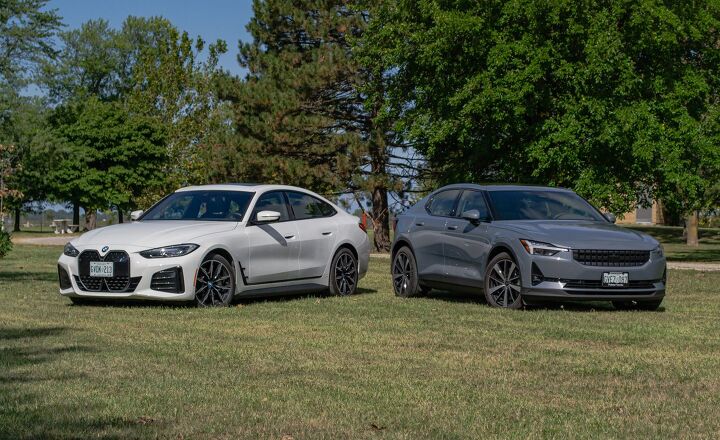
























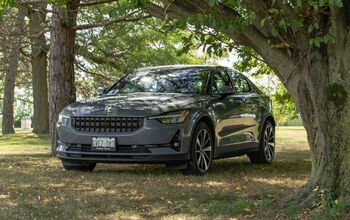
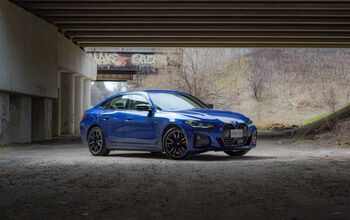
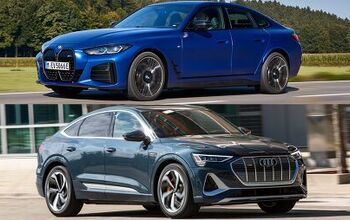
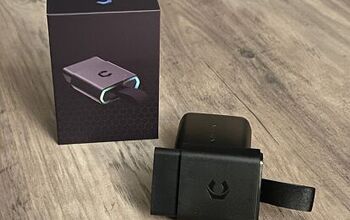
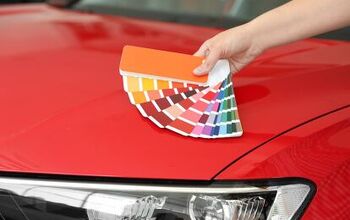






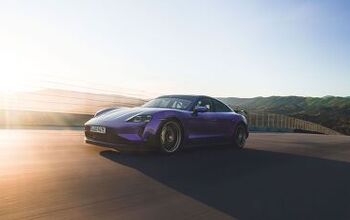

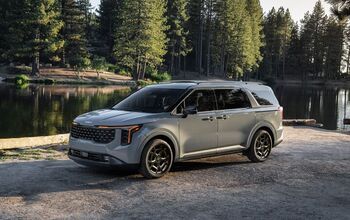
Comments
Join the conversation